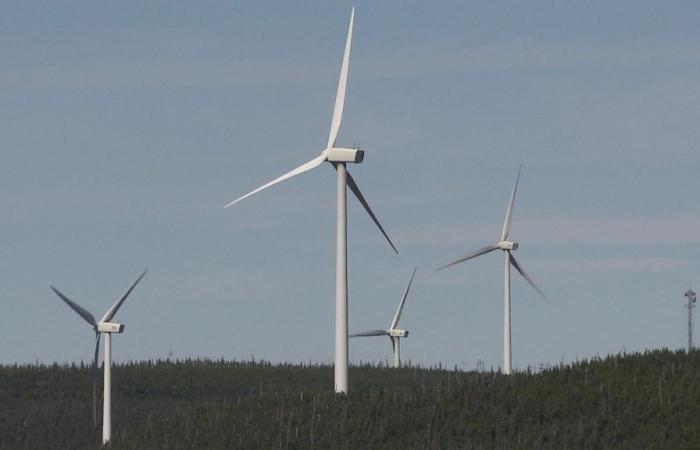The Office of Public Hearings on the Environment published its report on Wednesday on the Mesgi’g Ugju’s’n 2 wind farm project in the Avignon MRC. The BAPE recommends in particular the application of a measure to protect bats.
A text from Catherine Poisson
The commission of inquiry, which was held from March 11 to June 11, was chaired by Antoine Morissette and was to look into three specific aspects of the project, namely the impacts of infrasound and low frequency noise on wildlife, cumulative effects on wildlife habitats, and the dismantling of the wind farm.
In its report of around fifty pages, the commission of inquiry gave three opinions to the Ministry of the Environment, the Fight against Climate Change, Wildlife and Parks (MELCCFP).
On the noise of wind turbines
First, the commission considers that the noise emitted by the wind turbines, including infrasound, could have undesirable effects on the wildlife that frequents the site and considers that the MELCCFP should exercise scientific monitoring of these effects.
The report states that current knowledge on the effects of infrasound and low frequency sounds on wildlife is insufficient to establish guidelines in this area
.
However, the document lists several known consequences of noise on wildlife, such as the abandonment of a habitat and the disruption of various mechanisms crucial for the survival of many species.
On the protection of bats
Then, the commission argues that Quebec should require the application of a so-called restriction measure, to limit bat deaths.
This measure consists of limiting the operation of wind turbines during periods of low wind, i.e. the periods when bats are most active.
Open in full screen mode
The little brown bat is one of the endangered species that frequent the wind farm site.
Photo : Associated Press / Peter Thomson
The commission highlights the fact that in December 2023 the MELCCFP announced that a wind turbine restraint measure would be required for all selected projects in the future. However, as the Mesgi’g Ugju’s’n 2 project had already been selected by Hydro-Québec at the time of the announcement, it escapes this obligation.
The report also mentions that the project study area is frequented by six species of bats with special status
.
MU1, 14bat carcasses were found, i.e. 12hoary bats and 2little brown bats.”,”text”:”During the first three years of operation of the MU1 wind farm, 14 bat carcasses were found, i.e. 12 hoary bats and 2 small brown bats.”}}” >During the first three years of operation of the MU1 wind farm, 14 bat carcasses were found, including 12 hoary bats and 2 little brown bats.
On the dismantling of the park
Finally, the commission considers that the MELCCFP should collaborate with Recyc-Québec and wind turbine manufacturers in Quebec to establish requirements concerning the materials used in the manufacture of wind turbine blades with the aim of favoring, or even promoting, a rigorous application of the 3RV-E hierarchy and favoring a model based on the circular economy when these blades reach the end of their useful life
.
Mesgi’g Ugju’s’n 2… what is it?
The wind project was selected by Hydro-Québec in 2023, as part of a call for tenders launched in December 2021. It was submitted by the promoter Innergex and the Mi’gmawei Mawiomi Business Corporation, which represents the three communities mi’gmaw of Gaspésie, namely Gesgapegiag, Gespeg and Listuguj.
The project envisages the expansion of the existing wind farm, Mesgi’g Ugju’s’n 1. Up to 24 wind turbines could be added to the existing 47, for an additional power of 102 megawatts.
The Mesgi’g Ugju’s’n 2 wind farm is expected to be operational in 2026.
In addition to these three opinions, the commission of inquiry mentions that the project benefits from the support of several citizens and organizations, mainly for the economic and social benefits that it would generate.
The report recalls, however, that some people question the need to increase electricity production considering poor energy consumption habits in Quebec
.
In total, the commission of inquiry received eight briefs, three of which were presented during the public session held in Pointe-à-la-Croix on March 12, two comments and one oral presentation.






